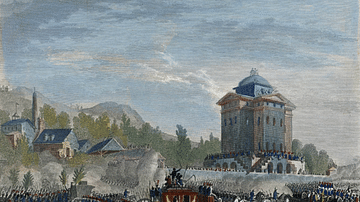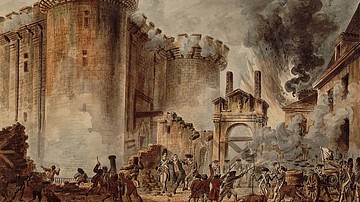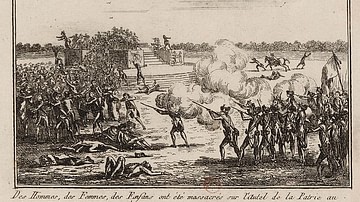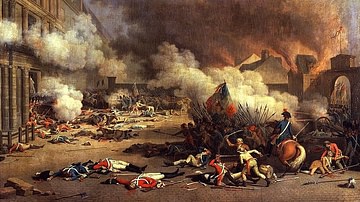Search
Search Results

Definition
Flight to Varennes
The Flight to Varennes was a pivotal moment of the French Revolution (1789-1799), in which King Louis XVI of France (r.1774-92), his wife Queen Marie Antoinette (1755-93), and their children attempted to escape from Paris on the night of...

Definition
Storming of the Bastille
The Storming of the Bastille was a decisive moment in the early months of the French Revolution (1789-1799). On 14 July 1789, the Bastille, a fortress and political prison symbolizing the oppressiveness of France’s Ancien Régime was attacked...

Definition
Champ de Mars Massacre
The Champ de Mars Massacre was an incident that took place on 17 July 1791, when soldiers of the National Guard under the Marquis de Lafayette opened fire on a crowd of demonstrators, who were calling for a referendum on the king's abdication...

Definition
Honoré-Gabriel Riqueti, comte de Mirabeau
Honoré-Gabriel Riqueti, comte de Mirabeau (l. 1749-1791) was a French orator and nobleman who rose to prominence as a leader during the early stages of the French Revolution (1789-1799). From the disgraced and scandalized son of a distinguished...

Definition
Louis-Antoine de Saint-Just
Louis-Antoine de Saint-Just (1767-1794) was a prominent figure of the French Revolution (1789-1799). After his election to the National Convention in September 1792, he led the push for the execution of King Louis XVI of France (r. 1774-1792...

Video
Neolithic Flint Mines at Spiennes (Mons) (UNESCO/NHK)
The Neolithic flint mines at Spiennes, covering more than 100 ha, are the largest and earliest concentration of ancient mines in Europe. They are also remarkable for the diversity of technological solutions used for extraction and for the...

Definition
French Revolutionary Wars
The French Revolutionary Wars (1792-1802) were a series of conflicts that arose from the tensions surrounding the French Revolution (1789-1799). The wars were fought between Revolutionary France and several European powers, most notably Austria...

Definition
Storming of the Tuileries Palace
The Storming of the Tuileries Palace, also commonly known as the Insurrection of 10 August, was a defining moment in the French Revolution (1789-99) that saw the armed revolutionaries of Paris invade the residence of King Louis XVI of France...

Definition
Jacques-Pierre Brissot
Jacques-Pierre Brissot de Warville (1754-1793) was a French journalist, abolitionist, and politician who played a prominent role in the French Revolution (1789-1799). A leader of the Girondins, a moderate political faction, Brissot was instrumental...

Definition
French Republican Calendar
The French Republican calendar, also known as the French Revolutionary calendar, was created during the French Revolution (1789-1799) in an attempt to build a new society separate from the vestiges of the Ancien Régime. First implemented...